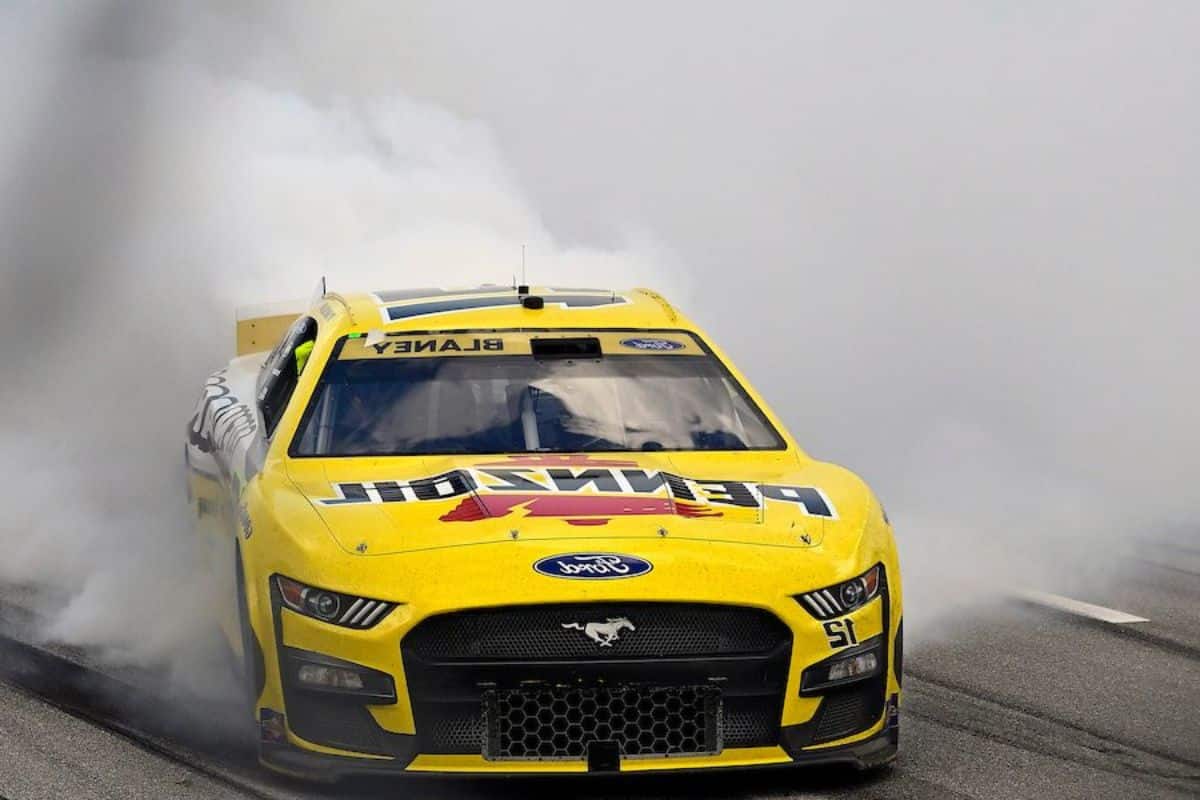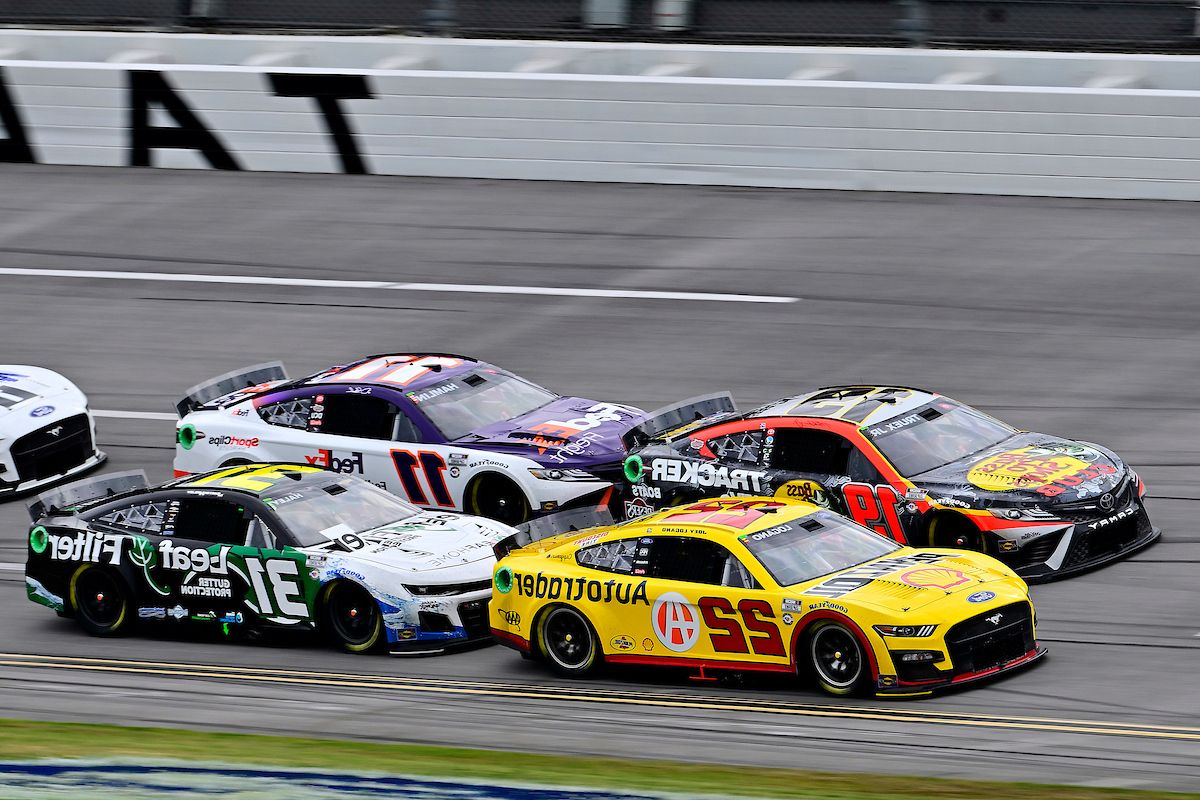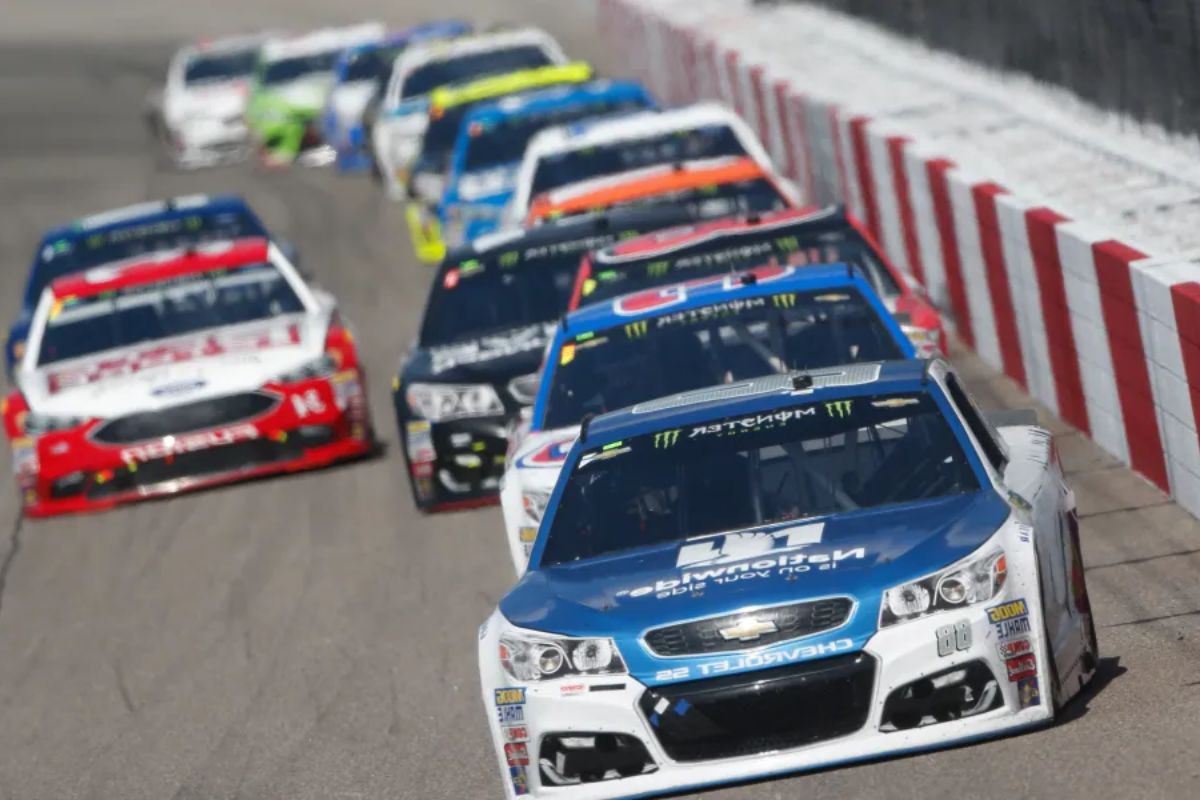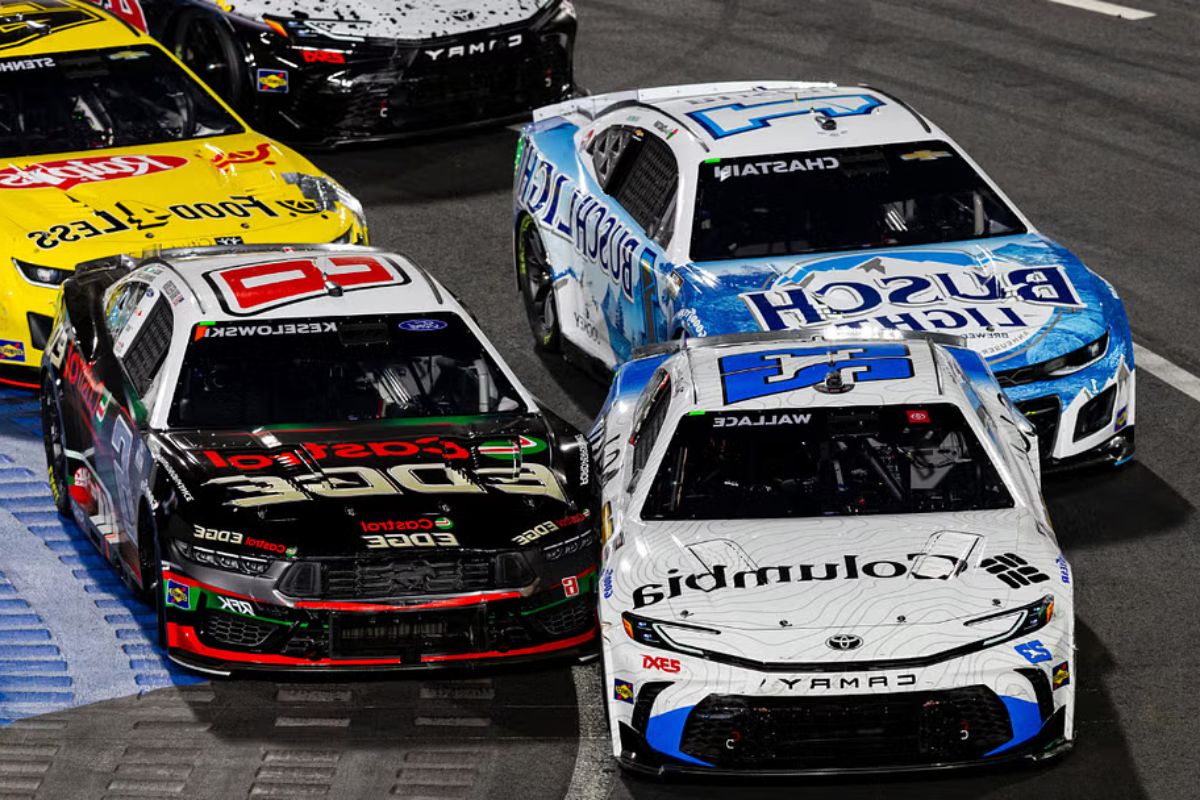Functional Vs Fake Headlights: In the high-octane world of NASCAR, every detail of a car’s design is meticulously crafted to maximize performance on the track. From the aerodynamics to the engine specifications, every element plays a crucial role in the pursuit of victory.
So, what about those headlights adorning the front end of these racing machines? Are they purely for aesthetic appeal, or do they serve a functional purpose? This question has intrigued both fans and experts alike, sparking a debate that dives into the intersection of style and practicality in the world of NASCAR.
As we dive into this discussion, we will explore the aesthetic and practical considerations behind the use of functional versus fake headlights, shedding light on an intriguing aspect of NASCAR car design that leaves us wondering: do these headlights serve a purpose beyond mere aesthetics?
Key Takeaways
- Faux headlights enhance the aesthetic appeal of NASCAR cars, making them resemble their street-legal counterparts.
- Functional headlights can pose safety risks in crashes, causing injury and complicating the cleanup process, while eliminating them enhances overall safety.
- Minimizing weight by eliminating functional headlights improves the performance of NASCAR cars, enhancing acceleration, braking, and cornering abilities.
- Faux headlights not only give the car a realistic appearance but also provide additional aerodynamic benefits by reducing drag, aligning with NASCAR’s commitment to streamlined race operations.
Aesthetic Appeal of NASCAR Cars: The Role of Faux Headlights
The faux headlights adorning NASCAR cars play a crucial role in enhancing their aesthetic appeal, while also serving as a distinctive visual element for teams to establish their identity in the era of Next Gen cars.
These decals, although non-functional, add a touch of realism to the cars, making them appear more like their street-legal counterparts. The sleek and aggressive design of the faux headlights creates a sense of speed and power, capturing the essence of NASCAR racing.
Additionally, the decals allow teams to personalize their cars, showcasing their unique branding and sponsorships. This not only adds to the overall visual appeal of the cars but also helps fans identify their favorite teams on the track.
The faux headlights serve as a canvas for creativity, allowing teams to infuse their own style and character into the design of their cars, further enhancing their aesthetic appeal.

Functional Purpose or Purely Decorative? Unveiling the Intent Behind Faux Headlights
As we shift our focus to the subtopic of ‘Functional Purpose or Purely Decorative? Unveiling the Intent Behind Faux Headlights’, it becomes imperative to dive into the underlying motivations for affixing these non-functional elements to NASCAR cars and explore the practical implications they bring to the sport.
- Clarification from Joe Gibbs Racing: According to Joe Gibbs Racing, the primary goal of affixing faux headlights is to maintain consistency with street car designs. This helps manufacturers promote their brand identity and connect with fans who are loyal to their products.
- Practical purposes served by the absence of functional headlights: NASCAR cars do not require functional headlights because the races take place during daylight hours or under well-lit tracks. Removing the need for headlights reduces weight, improves aerodynamics, and enhances the car’s overall performance.
- Importance of brand loyalty and identity: Faux headlights play a crucial role in visually representing the manufacturer’s brand on the race track. They serve as a distinctive feature that helps fans associate the car with a specific brand, further strengthening brand loyalty and identity.
Understanding the motivations behind faux headlights in NASCAR allows us to appreciate the practical considerations and brand-related implications that these non-functional elements bring to the sport.
Safety Considerations: Why NASCAR Opts Against Functional Headlights
With safety as a paramount concern, NASCAR strategically opts against incorporating functional headlights into their cars. While functional headlights may seem like a logical addition for night races or adverse weather conditions, they pose significant safety risks in the event of a crash. The potential hazards include shattered glass fragments that can cause injury to drivers, track officials, and spectators.
Moreover, functional headlights could complicate the cleanup process, delaying race operations and increasing the risk of secondary accidents. NASCAR’s decision to eliminate functional headlights enhances the overall safety of the sport by minimizing the potential for injury and streamlining race operations. This table illustrates the safety considerations and the rationale behind NASCAR’s choice:
| Safety Considerations | Rationale |
|---|---|
| Shattered glass fragments | Can cause injury to drivers, officials, and spectators |
| Cleanup efficiency | Streamlines race operations and minimizes the risk of secondary accidents |
Weight Matters: The Weight Factor in NASCAR Car Design
Minimizing weight is a critical factor in NASCAR car design, as teams and drivers strive to optimize lap times and speed on the track. Here are three key considerations regarding weight in NASCAR car design:
- Weight regulations: NASCAR imposes minimum weight requirements for each car to ensure fairness and safety. These regulations prevent teams from building excessively light cars that could potentially compromise performance or safety.
- Performance impact of headlights: Functional headlights would add extra weight to the car, potentially affecting its performance on the track. NASCAR cars do not require functional headlights as the races are held during daylight hours or under artificial lighting.
- Speed and handling optimization: By minimizing weight, teams can enhance the car’s acceleration, braking, and cornering abilities. Lighter cars have improved power-to-weight ratios, allowing them to reach higher speeds and maneuver more efficiently around the track.

Balancing Style and Performance: Understanding the Dynamics of NASCAR Car Features
When it comes to NASCAR car design, finding the perfect balance between style and performance is a constant challenge. Every aspect of the car, from its body shape to its features, must not only enhance its aesthetic appeal but also contribute to its overall performance on the track. One key feature that exemplifies this delicate balance is the use of faux headlights.
These headlights serve a primarily aesthetic purpose, giving the car a more realistic and relatable appearance. However, they also have practical considerations, such as providing additional aerodynamic benefits by reducing drag. Additionally, these faux headlights align with NASCAR’s commitment to streamlined race operations and optimized performance. By incorporating design elements that enhance both style and performance, NASCAR continues to push the boundaries of car design in the pursuit of excellence on the track.
| Pros | Cons |
|---|---|
| Improved aesthetics | No functional purpose |
| Reduces drag | Adds weight to the car |
| Enhances brand identity | Potential for damage in a crash |
| Reflects a realistic appearance | Limited visibility for the driver |
| Aligns with NASCAR’s commitment to performance | Requires additional maintenance |
Conclusion of Functional Vs Fake Headlights
The aesthetic appeal of NASCAR cars is influenced by the use of faux headlights, which serve both decorative and functional purposes. Although functional headlights may enhance safety, NASCAR opts against them due to weight considerations.
The dynamics of NASCAR car design involve a delicate balance between style and performance.
By understanding the role of faux headlights and the various considerations in their use, we gain insight into the unique features that make NASCAR cars both visually striking and high-performing machines.

Our Reader’s Queries
Q. Do NASCAR cars have real headlights?
A. In NASCAR, although many components are interchangeable due to the use of a common template, none of the features from a regular passenger car are retained in the race cars. This includes amenities like air conditioning, radios, GPS navigation systems, or cigarette lighters. Interestingly, certain external features on a NASCAR race car, such as headlights, taillights, and front grilles, are not authentic; instead, they are represented by decals. This emphasis on performance over passenger car features showcases the specialized and purpose-built nature of NASCAR vehicles for racing.
Q. What does headlights mean in NASCAR?
A. Dale Earnhardt Jr.’s insight captures the marketing strategy behind the use of decals on NASCAR race cars. While the lights on these cars are actually decals and not functional, they serve a promotional purpose. The goal is to make the NASCAR cars resemble real cars closely, influencing fans to develop brand loyalty and potentially choose the same make (Ford, Chevy, etc.) when purchasing a vehicle. This aligns with the traditional racing adage, “Win on Sunday, sell on Monday,” emphasizing the impact of on-track success in driving showroom sales for manufacturers.
Q. How do NASCAR drivers see without mirrors?
A. In NASCAR, drivers are not required to use traditional rear-view mirrors. Instead, they have the option to use special cameras mounted on top of the car as an alternative. These cameras provide a view of the rear of the car and its surroundings. Additionally, if drivers prefer, they can choose to use conventional mirrors. The flexibility in mirror options allows drivers to customize their setups based on personal preferences and comfort, contributing to the adaptability of NASCAR vehicles for individual drivers.
ALSO READ: Role of Haulers in NASCAR: Safeguarding the Journey of Specialized Stock Cars

